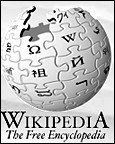New York's highest court of appeals has held that no-fault insurers cannot deny no-fault benefits where they unilaterally determine that a provider has committed misconduct based upon alleged fraudulent conduct. The Court held that this authority belongs solely to state regulators, specifically New York's Board of Regents, which oversees professional licensing and discipline. This follows a similar recent ruling in Florida reported in this publication.
Chiropractic on Wikipedia: Controversy and Opportunity
Wikipedia (www.wikipedia.org) is a communal online reference database whose slogan is "The free encyclopedia that anyone can edit." It is almost identical to an encyclopedia, with two notable differences: The content is free, and entries are written collaboratively by people all over the world.
The English-language version of Wikipedia was created in 2001, and has grown considerably since then; the site is now one of the largest reference Web sites available, with over 1 million English-language articles available online.

Just as traditional encyclopedia articles are updated to contain relevant information, Wikipedia entries are revised and edited for content periodically. And just as too many cooks in the kitchen can muddle a recipe, too many editors/contributors can confuse the message. This appears to be what is happening to Wikipedia's article on chiropractic. Upon accessing the article, readers are immediately greeted with a warning: "The neutrality and factual accuracy of this article are disputed." The warning then directs people to a "talk page" where (sometimes heated) opinions are expressed and debated before continuing to the main article.1
Wikipedia's chiropractic page is divided into 10 sections, covering topics such as the chiropractic subluxation, styles of practice, and a history of the profession.2 While many sections contain objective, credible information, questionable statements abound in other sections. Controversial elements include the following:
- No listing for a typical scope of practice for chiropractors is included in the article.
- Many of the links included as references are owned and operated by individuals who sell products and services to doctors of chiropractic.
- The "Scientific Support for Chiropractic" section claims, "The only study on chiropractic published in a peer-reviewed scientific journal (not a journal dedicated to chiropractic) was in American Scientist." In fact, American Scientist is a non-refereed science magazine, not a scientific journal. Furthermore, dozens of peer-reviewed articles on chiropractic have appeared in scientific literature over the past few decades.
- In addition to addressing the "straight" and "mixer" philosophies commonly known among the chiropractic profession, the article also refers to "reform" chiropractors who advocate an extremely limited use of chiropractic. This categorization does not apply to the typical practicing chiropractor, and appears to espouse the tenets of fringe organizations such as the notorious National Association for Chiropractic Medicine.
- The "External Links" section lists several associations and colleges in the U.S. and elsewhere. However, it leaves off many noteworthy organizations, such as the Foundation for Chiropractic Education and Research, and does not include links to a handful of accredited chiropractic schools in North America.
The open-source nature of Wikipedia has caused its share of controversy. In May 2005, an anonymous contributor modified an entry on American journalist and political figure John Seigenthaler which alleged, among other things, that he had played a role in the Kennedy assassinations. The erroneous information remained online for almost four months, and eventually received national media attention before a corrected version of the article was published in October 2005. More recently, Wikipedia took the rare step of blocking further editing to its entry on President George W. Bush, due to significant portions of the entry being "vandalized."
That the accuracy of Wikipedia's chiropractic article has been called into question is nothing new. For more than three years, the merits of certain paragraphs and sections - and sometimes, the entire article - have been debated. Under the "Criticisms" section of the talk page, for example, one reader recently wrote:
"Out of thousands of positive articles, they choose to use one of the few old negative studies as a reference. If someone brand new to chiropractic came and read this article, they'd think NACM is actually a legitimate chiropractic association. There are just so many problems in the article, it should be purged and rewritten from scratch. Definition of chiropractic has already been written. Practice scope can be imported from state board. History of chiropractic can be supplied by legitimate associations. There are proper channels of information which can be used to write the article. Yet it's written by a group of chiropractors not even making up a percentage point."
Another criticism stated, "This article is of shocking quality. From the very first paragraph the article is already trying to defend [a] practitioner's claim to be 'doctors.' The whole article reads like an argument for why chiropractic is a scientifically valid health service. Such arguments are irrelevant to the subject of chiropractic at large. I'd propose that the whole article be rewritten such that the main article discusses what chiropractic is and describes the ideas behind it and the mechanisms through which it is supposed to work, while the debate about whether chiropractic is valid be restricted to its own small section or separated into a completely separate article."
By its own admission, Wikipedia's editing process can present obstacles to getting the chiropractic message out. According to the site, "Wikipedia's radical openness means that any given article may be, at any given moment, in a bad state, such as in the middle of a large edit, a controversial rewrite, or recently vandalized. Wikipedia operates a full editorial dispute resolution process, that allows time for a discussion to be discussed and resolved in depth, but also permits months-long disagreements before poor quality or biased edits will be removed forcibly."
Yet this same process, which can be seen as a weakness by some, can be viewed as an opportunity for the chiropractic profession. The site claims among its strengths that "anyone with access to an Internet-connected computer can edit, correct or improve information throughout the encyclopedia" and that "having a very large number of writers and editors provides access and breadth on subject matter that is otherwise inaccessible or little documented."
According to Wikipedia's editorial guidelines, the debate over the chiropractic article's content might continue for some time before changes are implemented. Even then, not everyone is going to agree with or appreciate those changes. But, by the very nature of this open forum, doctors of chiropractic have' an opportunity to offer their insights and knowledge to those who might be considering chiropractic care. By coming together and presenting common knowledge and facts regarding the profession from respected and accredited educational institutions and professional organizations, the chiropractic community has an opportunity to provide the public with a clear, accurate picture of this vital health care profession.
References
- The direct address for the chiropractic page on Wikikpedia.org is http://en.wikipedia.org/wiki/Chiropractic.
- The description of Wikipedia's chiropractic page is correct as of March 10, 2006, when this article went to press.
Written by Kathryn Feather and Michael Devitt



